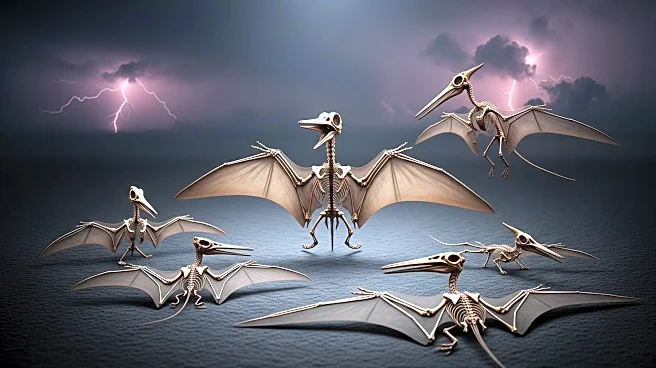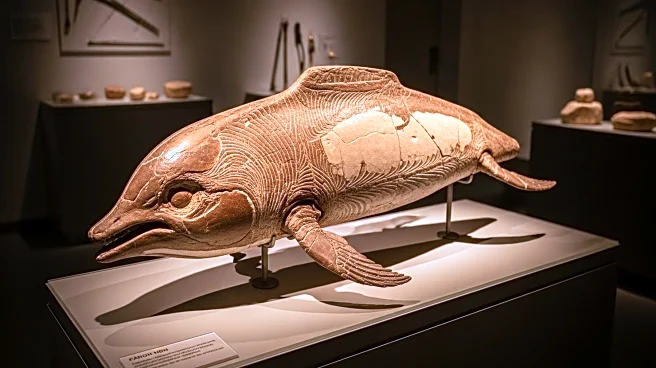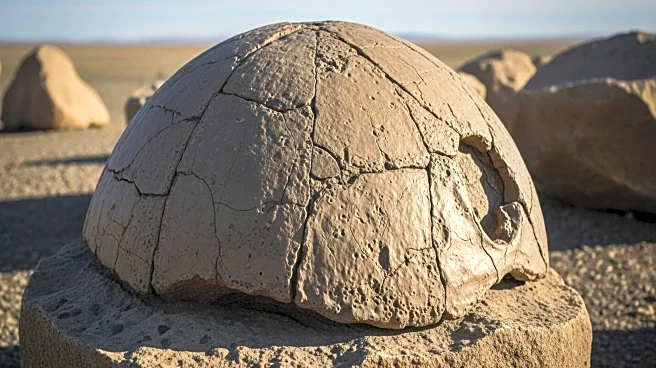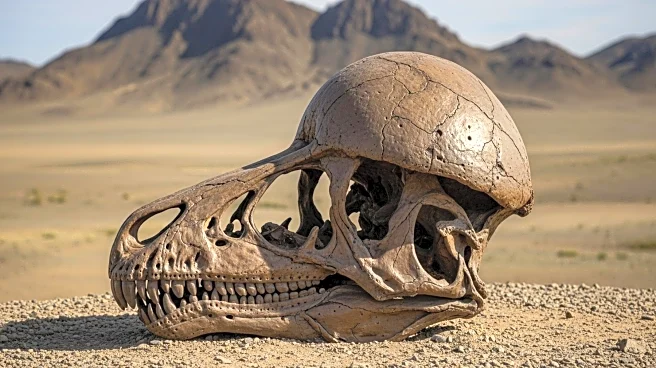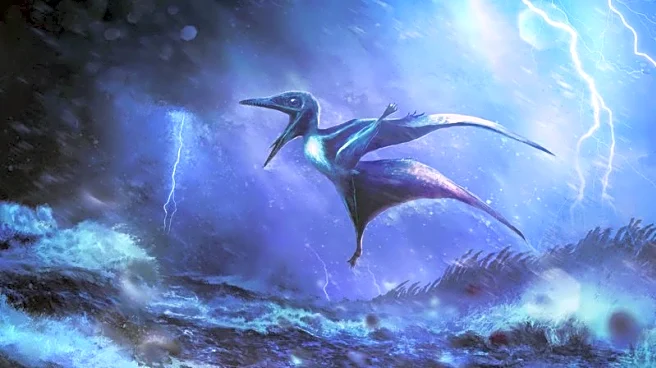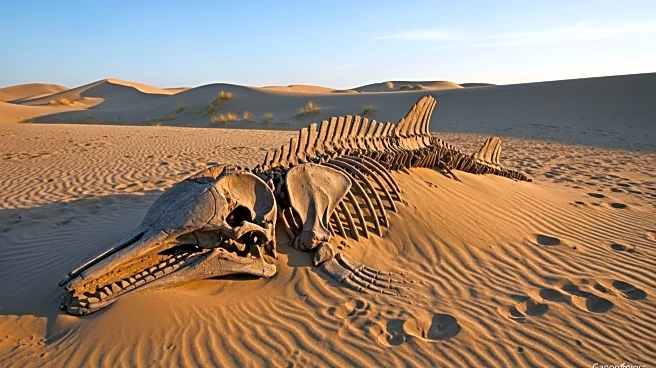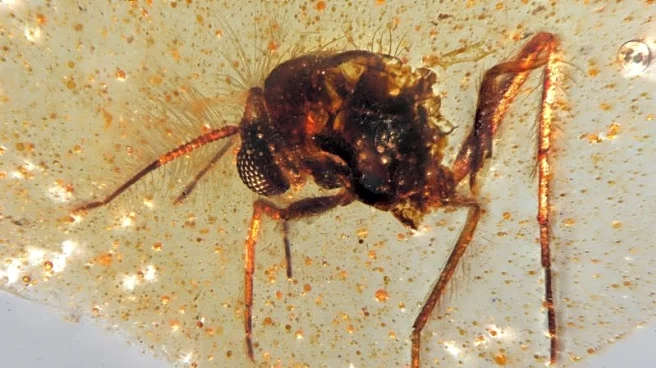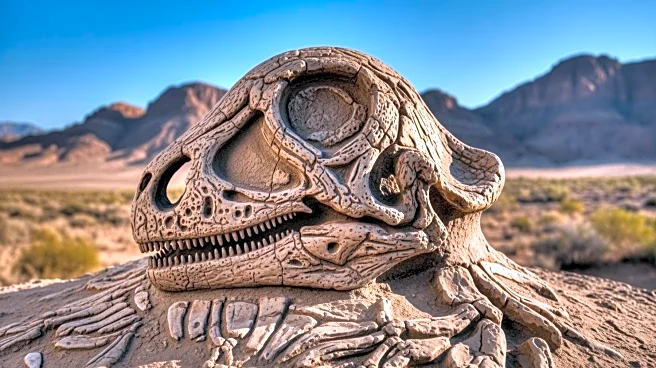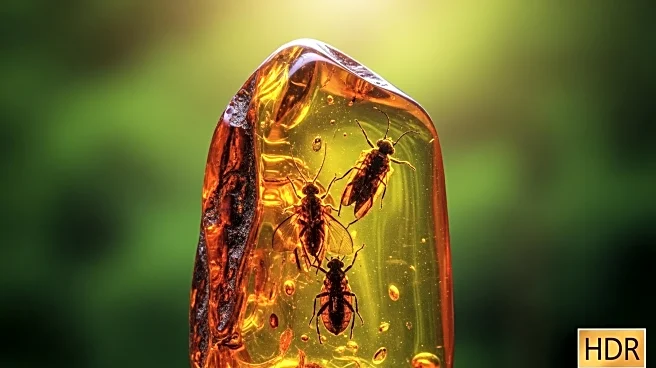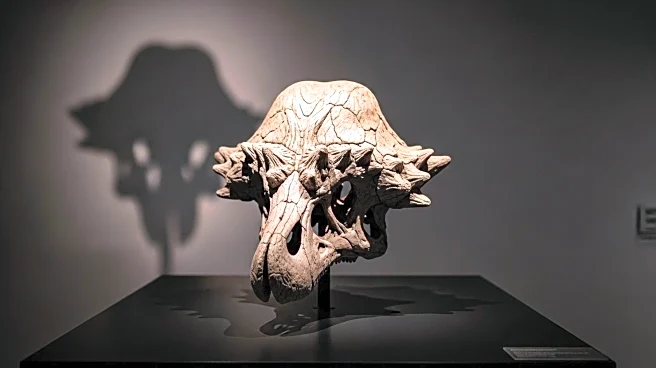What is the story about?
What's Happening?
A recent study has revealed that two baby pterosaurs, nicknamed Lucky and Lucky II, likely died due to a violent storm about 150 million years ago. The fossils, found in southern Germany, are among the smallest pterosaur specimens ever discovered, with wingspans of less than 8 inches. The study suggests that the storm caused fractures in the pterosaurs' arm bones, leading to their fall into a lagoon where they drowned and were rapidly buried by mud stirred up by the storm. This preservation process has provided rare insights into the circumstances of their deaths and the broader ecosystem of the Solnhofen Limestone region.
Why It's Important?
The discovery sheds light on the fossilization process and the environmental conditions of the Jurassic period. It highlights how natural disasters can influence the fossil record, offering insights into the prehistoric ecosystems and the survival challenges faced by young pterosaurs. The study also contributes to understanding the distribution of pterosaur fossils, explaining why smaller specimens are more commonly found than larger ones. This research enhances the scientific community's knowledge of pterosaur biology and their interactions with their environment.
What's Next?
Researchers aim to further investigate the flying capabilities of hatchling pterosaurs, which could provide insights into their early life survival strategies. The study opens avenues for exploring how prehistoric storms affected other species and ecosystems, potentially leading to new discoveries about the Jurassic period's biodiversity and climate dynamics.
Beyond the Headlines
The study raises questions about the biases in the fossil record caused by environmental factors, prompting a reevaluation of how scientists interpret fossil data. It also underscores the importance of interdisciplinary approaches in paleontology, combining geological and biological insights to reconstruct ancient life scenarios.
AI Generated Content
Do you find this article useful?
